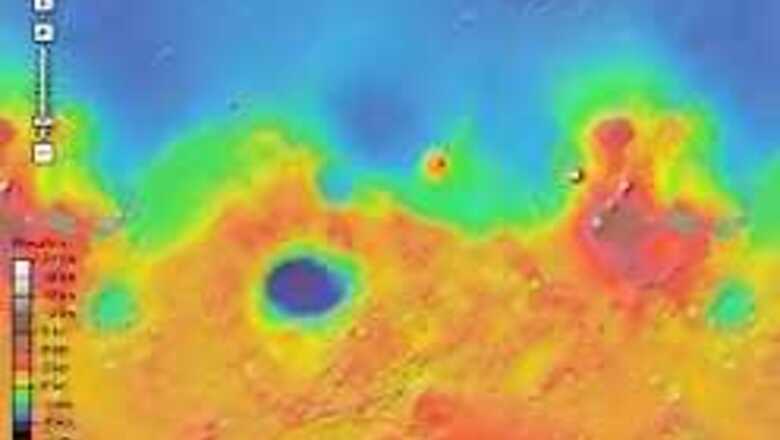
views
Los Angeles: First there was Google Earth, then Google Moon. On Monday, Google Inc expanded its galactic reach by launching Google Mars, a web browser-based mapping tool that gives users an up-close, interactive view of the Red Planet with the click of a mouse.
The Martian maps were made from images taken by NASA's orbiting Mars Odyssey and Mars Global Surveyor.
Google Mars doesn't provide driving directions, but users can see the planet in three different formats: The Martian elevation map is color-coded by altitude; the visible-imagery map shows the surface in black-and-white pictures; the infrared map indicates temperature, with cooler areas dark and warmer areas bright.
Users can also zoom in on any of the three maps to view geographical features such as mountains, canyons, dunes and craters. The maps also pinpoint the locations of unmanned space probes that have landed on Mars.
The up-to-date maps even include the locations of the NASA rovers Spirit and Opportunity, which have been exploring opposite ends of the planet since 2004, said Phil Christensen, an Arizona State University planetary geologist who operates an infrared camera on the Mars Odyssey. Arizona State partnered with Google to create the maps.
PAGE_BREAK
While countless Mars images are already available on the Internet - mostly through NASA's Mars mission websites - the developers of Google Mars said this is the first time that members of the public can explore Mars on their own.
"The idea is to look at Mars and not think of it as a mysterious alien place," Christensen said. Christensen said the Martian maps would most likely be updated every few weeks.
Last week, another spacecraft, the Mars Reconnaissance Orbiter, successfully slipped into orbit around the planet, joining the Mars Odyssey and Mars Global Surveyor.
Since the Reconnaissance Orbiter is the most powerful spacecraft ever to orbit Mars, Christensen said, scientists may eventually incorporate its data into Google Mars. Last summer, the Internet search engine unveiled Google Earth, a three-dimensional, satellite-based mapping service that allowed browsers to interactively explore their neighborhood or far-flung places.
Google Earth was followed by Google Moon, which showed the locations of all six Apollo moon landings.
Google launched its Martian mapping service on what would have been the 151st birthday of astronomer Percival Lowell, who studied the Red Planet for more than two decades.
"We hope you enjoy your trip to Mars," Chikai Ohazama, a Google Earth team member, wrote in a blog posted on the search engine's Web site.



















Comments
0 comment